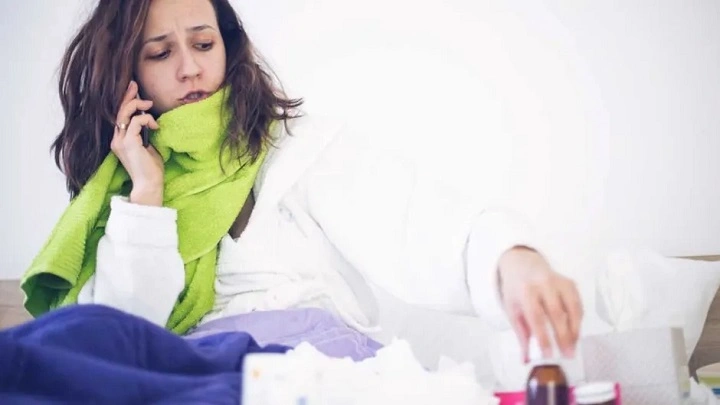When you have a fever, it’s common to experience chills or a sensation of feeling cold even though your body temperature is actually elevated. This paradoxical feeling can be confusing and uncomfortable. Understanding why this happens involves knowing how your body regulates temperature and responds to infection. This article explores the science behind why you feel cold when you have a fever, the mechanisms involved, symptoms to watch for, and how to manage chills effectively.
What Is a Fever?

Definition of Fever
A fever is a temporary increase in your body’s internal temperature, usually as a response to infection or illness. The typical normal body temperature is around 98.6°F (37°C), but during a fever, it can rise above 100.4°F (38°C).
Purpose of a Fever
The body raises its temperature to help fight off invading pathogens such as viruses or bacteria. Higher temperatures can inhibit the growth of some microorganisms and boost immune system activity.
Why Do You Feel Cold During a Fever?
The Body’s Thermostat: Hypothalamus Role
The hypothalamus, a part of the brain, acts as the body’s thermostat. It regulates internal temperature by maintaining a balance between heat production and heat loss.
During a fever, the hypothalamus resets the “set point” for body temperature higher than normal. Your body perceives its current temperature as too low compared to this new set point.
Chills and Shivering as a Heat-Generating Response
To reach the new higher temperature set by the hypothalamus, your body activates heat-producing mechanisms:
- Shivering: Rapid muscle contractions generate heat.
- Vasoconstriction: Blood vessels near the skin constrict to reduce heat loss.
- Goosebumps: Tiny muscles around hair follicles contract, slightly improving insulation.
These responses cause the sensation of cold and chills even though your core temperature is rising.
Difference Between Feeling Cold and Actual Body Temperature
Your skin and peripheral tissues may feel cold because blood flow is reduced to conserve heat internally. This contrast between skin temperature and rising internal temperature creates the feeling of being cold.
Symptoms Associated With Feeling Cold During Fever
Chills
Shivering accompanied by rapid, involuntary muscle movements is the hallmark of chills. This helps increase body temperature faster.
Cold Sensation and Pale Skin
Due to vasoconstriction, skin may appear pale and feel cold or clammy.
Sweating After Fever Breaks
When the fever “breaks” or returns to normal, the hypothalamus resets to a lower temperature, leading to vasodilation and sweating to cool down the body.
Causes of Fever That Trigger Cold Sensations
Infections
Common infections like the flu, cold, pneumonia, or urinary tract infections often cause fever and chills.
Inflammatory Conditions
Diseases that cause inflammation, such as rheumatoid arthritis, can trigger fever responses.
Other Causes
Heatstroke, certain cancers, medication reactions, or autoimmune diseases may also cause fever accompanied by chills.
How to Manage Feeling Cold and Chills During Fever

Dress Appropriately
Wear light, breathable layers so you can adjust clothing as your temperature changes.
Use Warm Blankets
During chills, wrapping yourself in blankets helps conserve heat but avoid overheating.
Stay Hydrated
Fever and sweating can lead to dehydration, so drink plenty of fluids like water, herbal teas, or electrolyte solutions.
Medications to Reduce Fever
Over-the-counter antipyretics such as acetaminophen (Tylenol) or ibuprofen (Advil) can help lower fever and reduce chills.
Rest and Monitor Symptoms
Allow your body to recover with adequate rest, and keep track of fever duration and severity.
When to See a Doctor
High or Prolonged Fever
If fever exceeds 103°F (39.4°C) or lasts more than three days, seek medical advice.
Severe Chills or Shaking
Intense chills with shaking or confusion require prompt medical attention.
Additional Symptoms
Difficulty breathing, chest pain, persistent vomiting, or rash accompanying fever and chills should prompt a visit to a healthcare professional.
Frequently Asked Questions (FAQs)
Why do I feel cold when my temperature is high?
Your body’s thermostat resets higher during a fever, making your current temperature feel too low and triggering heat-producing responses like shivering.
Can chills occur without a fever?
Yes, chills can happen due to cold exposure or certain medical conditions even without a fever.
How long do chills last with a fever?
Chills typically last until your body reaches the new fever set point, often 15 minutes to an hour, but this varies by individual and illness.
Does feeling cold mean my fever is getting worse?
Feeling cold or experiencing chills means your body is raising its temperature, which is part of the immune response, not necessarily worsening illness.
Are chills dangerous?
Chills themselves are not dangerous but may indicate an underlying infection that needs treatment if accompanied by other severe symptoms.
Feeling cold when you have a fever is a natural and important part of your body’s defense mechanism. The sensation of chills and cold skin occurs as your hypothalamus raises the body’s temperature set point, prompting heat-generating responses. Understanding this process helps you manage symptoms better and know when to seek medical care. Remember to stay hydrated, rest well, and consult a healthcare provider if your fever or chills become severe or prolonged.


